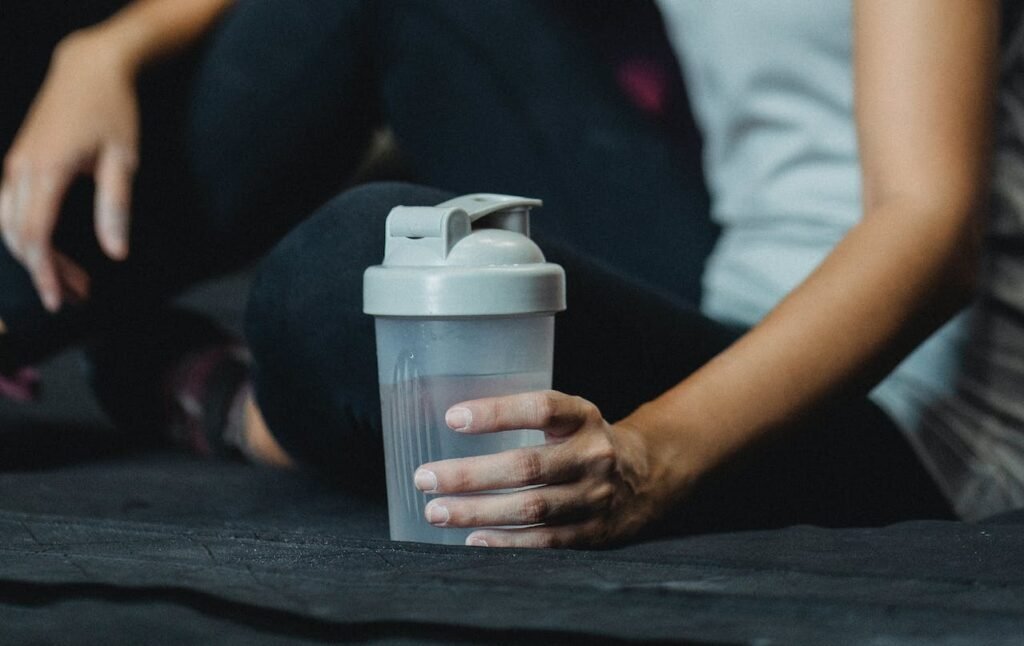In the ever-evolving landscape of fitness, the choice between High-Intensity Interval Training (HIIT) and Steady-State Cardio has become a pivotal decision for enthusiasts seeking optimal health. Embarking on a journey to unravel the ‘why’ behind each, this comprehensive guide delves deep into the intricacies of HIIT vs. Steady-State Cardio. From understanding the fundamental principles to exploring the science behind their effectiveness, we navigate the terrain of these two prominent cardio methods. Join us as we calculate the ideal workout, share practical tips on incorporating both into your fitness routine, and shed light on the crucial aspects of recovery, personalization, and diet. Whether you’re a seasoned fitness enthusiast or just beginning your wellness journey, this guide aims to demystify the world of HIIT and Steady-State Cardio, providing you with the knowledge to make informed choices for your unique fitness goals.
| Aspect | High-Intensity Interval Training (HIIT) | Steady-State Cardio |
|---|---|---|
| Definition | Short bursts of intense activity followed by rest periods. | Maintaining a consistent pace over a longer duration. |
| Intensity | 80%-95% of maximum heart rate during intense intervals. | 50%-70% of maximum heart rate, sustained over the entire workout. |
| Duration | Short sessions (e.g., 15-30 minutes) due to high intensity. | Longer sessions (e.g., 20-60 minutes) for sustained endurance. |
| Benefits | Efficient calorie burn, boosts metabolism, improves cardiovascular fitness. | Builds endurance, promotes heart health, consistent calorie burning. |
| Recovery Time | Shorter recovery time due to intense intervals. | Longer recovery time as the workout is less intense. |
| Ideal Frequency | 1-2 sessions per week for beginners, can increase based on fitness level. | 3-5 sessions per week, suitable for regular, consistent training. |
| Suitability for Beginners | Can be challenging; beginners should start with lower intensity. | Beginner-friendly; lower intensity allows for gradual progression. |
| Weight Loss Emphasis | Efficient for weight loss; ‘afterburn effect’ contributes to calorie burn. | Consistent calorie burn over time aids in weight loss. |
| Endurance Building | Improves cardiovascular fitness rapidly but may be intense for beginners. | Effective for building sustained endurance without intense spikes. |
| Workout Variety | Offers variety through different exercises and interval structures. | Requires maintaining a steady pace; variety comes from activity choice. |
| Long-Term Sustainability | May be demanding, but sustainable with proper progression and recovery. | Generally more sustainable for beginners and those with certain conditions. |
- HIIT vs. Steady-State Cardio: An In-Depth Comparison
- Understanding the Basics: What is HIIT and Steady-State Cardio?
- The Science Behind HIIT: How It Works and Its Benefits
- Exploring Steady-State Cardio: Endurance and Health Benefits
- Intensity Levels: Comparing HIIT and Steady-State Workouts
- Calculating the Ideal Workout: Formulas for HIIT and Steady-State
- How to Incorporate HIIT into Your Fitness Routine
- Steady-State Cardio Strategies: Building Endurance Effectively
- HIIT vs. Steady-State Cardio for Weight Loss: What's More Effective?
- Balancing High-Intensity and Steady Workouts for Optimal Health
- Recovery and Rest: Managing Your Body's Needs Post-Workout
- Personalizing Your Workout: Tailoring HIIT and Steady-State to Your Goals
- The Role of Diet in HIIT and Steady-State Cardio Routines
- Tracking Progress: Tools and Tips for HIIT and Steady-State Enthusiasts
- Future Trends in Cardio Training: HIIT and Steady-State Evolving
- Final Thoughts:
- FAQs:
HIIT vs. Steady-State Cardio: An In-Depth Comparison
When diving into the world of cardiovascular fitness, two prominent methods often emerge: High-Intensity Interval Training (HIIT) and Steady-State Cardio. Both have unique attributes and benefits, catering to different fitness goals and preferences. HIIT, known for its short bursts of intense activity followed by rest periods, is acclaimed for its efficiency and ability to boost metabolism. Steady-State Cardio, on the other hand, involves maintaining a consistent pace over a longer duration, often revered for enhancing endurance and cardiovascular health.
Understanding the Basics: What is HIIT and Steady-State Cardio?
To grasp the essence of HIIT vs. Steady-State Cardio, it’s crucial to comprehend their fundamental principles. HIIT involves exercises like sprinting or high-intensity cycling, usually performed in intervals – intense activity for a period (e.g., 30 seconds) followed by a rest or low-intensity interval (e.g., 1 minute). Contrarily, Steady-State Cardio entails activities like jogging, swimming, or cycling at a consistent, moderate pace, typically for 20 minutes or more. This method allows for a sustained heart rate, enhancing aerobic capacity.
The Science Behind HIIT: How It Works and Its Benefits
HIIT’s appeal lies in its scientific backing. The method leverages the concept of EPOC (Excess Post-Exercise Oxygen Consumption), which means your body continues to burn calories even after the workout, a phenomenon often referred to as the ‘afterburn effect.’ This makes HIIT incredibly effective for weight loss and improving metabolic rate. Moreover, HIIT enhances cardiovascular fitness rapidly, improves insulin sensitivity, and can be tailored to all fitness levels.
Exploring Steady-State Cardio: Endurance and Health Benefits
Steady-State Cardio’s strength lies in its ability to build endurance and promote heart health. By maintaining a constant heart rate, it improves the heart’s efficiency in pumping blood and increases lung capacity. This form of exercise is often recommended for stress reduction, fat burning over longer periods, and building a solid foundation for cardiovascular fitness. It’s particularly beneficial for beginners or those with certain health conditions due to its lower intensity and manageable pace.
Intensity Levels: Comparing HIIT and Steady-State Workouts
The key differentiator between HIIT and Steady-State Cardio is the intensity level. HIIT workouts typically reach about 80%-95% of a person’s maximum heart rate, interspersed with periods of lower intensity. This can be calculated using the formula: Maximum Heart Rate=220−ageMaximum Heart Rate=220−age. In contrast, Steady-State Cardio aims for a consistent 50%-70% of maximum heart rate, ideal for longer sessions. Understanding these intensity levels is crucial for structuring a workout that aligns with your fitness goals and endurance levels.
Calculating the Ideal Workout: Formulas for HIIT and Steady-State
To optimize your cardio workouts, whether it’s HIIT or Steady-State, understanding the right formulas is key. For HIIT, the work-to-rest ratio is crucial. Common ratios include 1:1 (e.g., 30 seconds high intensity, 30 seconds rest) or 1:2 for beginners. For Steady-State, the formula is simpler: maintain a consistent pace where you can comfortably talk but not sing. Calculating your target heart rate for both can guide intensity levels: Target Heart Rate=(Maximum Heart Rate−Resting Heart Rate)×Desired Intensity+Resting Heart RateTarget Heart Rate=(Maximum Heart Rate−Resting Heart Rate)×Desired Intensity+Resting Heart Rate.
How to Incorporate HIIT into Your Fitness Routine
Incorporating HIIT into your routine can be a game changer. Start with 1-2 sessions per week, each lasting about 15-30 minutes. A simple way to begin is with bodyweight exercises like jump squats or burpees. Ensure you have a good warm-up beforehand and a cool-down period after. Listen to your body and gradually increase intensity and frequency. Remember, HIIT is demanding, so adequate rest and recovery are essential.
Steady-State Cardio Strategies: Building Endurance Effectively
For Steady-State Cardio, consistency is key. Aim for 3-5 sessions per week, ranging from 20-60 minutes each. Choose activities you enjoy, like cycling, swimming, or walking. The focus should be on maintaining a steady pace throughout. Incrementally increasing the duration over time will help build endurance effectively. Pairing Steady-State Cardio with strength training can also enhance overall fitness.
HIIT vs. Steady-State Cardio for Weight Loss: What’s More Effective?
When it comes to weight loss, both HIIT and Steady-State Cardio have their merits. HIIT is efficient, burns a lot of calories in a short amount of time, and keeps burning calories post-workout. Steady-State Cardio, while lower in intensity, burns calories consistently over a longer period and is less taxing on the body. The best approach depends on individual preferences, fitness levels, and how each method fits into your lifestyle.
Balancing High-Intensity and Steady Workouts for Optimal Health
The key to a well-rounded fitness regimen is balance. Combining HIIT with Steady-State Cardio can provide comprehensive health benefits. HIIT boosts cardiovascular health and metabolism, while Steady-State improves endurance and aids recovery. For instance, you might do HIIT 1-2 times a week and Steady-State Cardio 2-3 times a week. This balance helps prevent overtraining and ensures a holistic approach to cardiovascular health.
Recovery and Rest: Managing Your Body’s Needs Post-Workout
Recovery is a vital component of any fitness regimen, especially when balancing HIIT and Steady-State Cardio. Post-HIIT, it’s crucial to allow your body to recover through rest days or light activities like walking or yoga. This aids in muscle repair and prevents burnout. After Steady-State Cardio, stretching and hydration are key to helping muscles recover and reducing soreness. Incorporating activities like foam rolling or massage can further enhance recovery and prepare your body for the next workout.
Personalizing Your Workout: Tailoring HIIT and Steady-State to Your Goals
Every individual’s fitness journey is unique, and so should be their workout routine. Personalizing your HIIT and Steady-State Cardio regimen depends on your goals, whether it’s weight loss, endurance building, or overall health improvement. For weight loss, a combination of both with a focus on HIIT might be more effective. If endurance is your goal, emphasizing Steady-State Cardio with occasional HIIT sessions can yield better results. Always consider your fitness level, preferences, and any medical advice when customizing your routine.
The Role of Diet in HIIT and Steady-State Cardio Routines
Diet plays a crucial role in maximizing the benefits of both HIIT and Steady-State Cardio. For HIIT, a diet rich in protein and complex carbohydrates can aid in quick energy release and muscle recovery. Hydration is also critical due to the intense nature of the workouts. For Steady-State Cardio, a balanced diet with a good mix of carbs, proteins, and fats is essential to sustain longer workout periods. Eating small, balanced meals throughout the day can keep energy levels steady.
Tracking Progress: Tools and Tips for HIIT and Steady-State Enthusiasts
Monitoring your progress is key to staying motivated and adjusting your workouts for maximum effectiveness. Use fitness trackers to monitor heart rate, calories burned, and workout duration. Keeping a workout journal can also be beneficial, allowing you to track changes in your performance and endurance over time. For HIIT, focus on tracking improvements in intensity and recovery time, while for Steady-State, monitor endurance and consistency in heart rate during workouts.
Future Trends in Cardio Training: HIIT and Steady-State Evolving
The world of cardio training is ever-evolving, with new trends and research continually emerging. Wearable technology is becoming increasingly sophisticated, offering more detailed tracking and personalized workout suggestions. Additionally, virtual and augmented reality are beginning to make their way into the cardio training sphere, offering immersive and interactive workout experiences. As research progresses, we may also see more tailored approaches to HIIT and Steady-State Cardio, based on individual genetic makeup and fitness levels.
Final Thoughts:
The choice between High-Intensity Interval Training (HIIT) and Steady-State Cardio is not a matter of one-size-fits-all, but rather a personalized decision influenced by individual goals, preferences, and fitness levels. Both methods offer distinct advantages, whether you’re aiming for rapid calorie burn, enhanced endurance, or an overall improvement in cardiovascular health. By understanding the science, calculating the ideal workout, and incorporating recovery strategies, you can tailor your fitness routine to align with your unique needs. Remember, it’s not a competition between HIIT and Steady-State Cardio; rather, it’s about finding the right balance that works for you. As we explore the future trends in cardio training, the world of fitness continues to evolve, promising exciting possibilities for enthusiasts seeking innovative and effective ways to stay fit. Embrace the journey, experiment with what suits you best, and enjoy the transformative power of cardiovascular exercise in your pursuit of a healthier, happier lifestyle.
FAQs:
1. What is the main difference between HIIT and Steady-State Cardio?
HIIT involves short bursts of intense activity followed by rest periods, aiming to push your body to maximum effort in a short time. Steady-State Cardio, on the other hand, maintains a consistent pace over a longer duration, focusing on sustained heart rate and endurance.
2. How do I calculate the target heart rate for HIIT and Steady-State Cardio?
For both methods, you can calculate your target heart rate using the formula: Target Heart Rate=(Maximum Heart Rate−Resting Heart Rate)×Desired Intensity+Resting Heart RateTarget Heart Rate=(Maximum Heart Rate−Resting Heart Rate)×Desired Intensity+Resting Heart Rate. Adjust the intensity based on your fitness goals.
3. Can I combine HIIT and Steady-State Cardio in my fitness routine?
Absolutely! Combining both methods can offer a well-rounded approach to cardiovascular fitness. Consider incorporating HIIT for efficiency and metabolic boost, and Steady-State Cardio for endurance and overall heart health.
4. How often should I do HIIT or Steady-State Cardio workouts?
The frequency depends on your fitness level and goals. Beginners might start with 1-2 sessions per week and gradually increase. For Steady-State Cardio, 3-5 sessions per week can be effective. Listen to your body and adjust accordingly.
5. Is one method better for weight loss?
Both HIIT and Steady-State Cardio can contribute to weight loss. HIIT is efficient for burning calories in a short time, while Steady-State Cardio burns calories consistently over a longer duration. The best choice depends on your preferences and how each fits into your lifestyle.
6. What role does recovery play in these workouts?
Recovery is crucial. After HIIT, allow for rest or light activities to aid muscle repair. Stretching and hydration post-Steady-State Cardio help reduce soreness. Balancing workout intensity with adequate recovery ensures long-term sustainability.
7. How can I personalize my HIIT and Steady-State Cardio routine?
Personalization depends on your fitness goals. For weight loss, a combination might be effective; for endurance, prioritize Steady-State Cardio. Consider your preferences, fitness level, and any medical advice when tailoring your routine.
8. Are there future trends in cardio training to look out for?
The future of cardio training includes advancements in wearable technology, virtual reality experiences, and more personalized approaches based on individual genetics. Stay tuned for innovative ways to enhance your cardio workouts.



